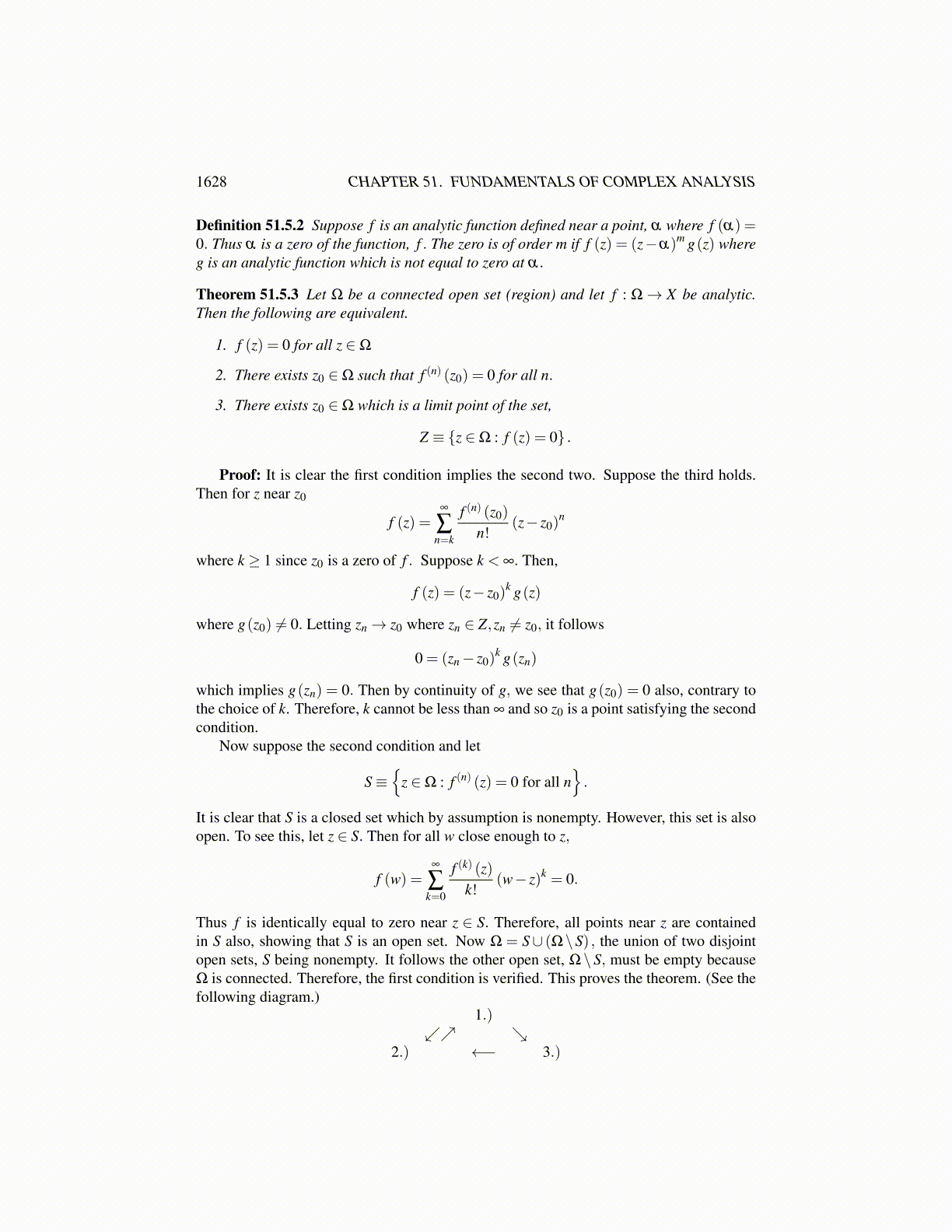
1628 CHAPTER 51. FUNDAMENTALS OF COMPLEX ANALYSIS
Suppose f is analytic on |z|< R and
f (z) =∞
∑n=0
anzn (51.4.15)
with the series converging uniformly on |z|= R. Then letting |w|= R,
2u(w) = f (w)+ f (w)
and so
2u(w) =∞
∑k=0
akwk +∞
∑k=0
ak (w)k . (51.4.16)
Now letting γ (t) = Reit , t ∈ [0,2π]∫γ
2u(w)w
dw = (a0 +a0)∫
γ
1w
dw
= 2πi(a0 +a0) .
Thus, multiplying 51.4.16 by w−1,
1πi
∫γ
u(w)w
dw = a0 +a0.
Now multiply 51.4.16 by w−(n+1) and integrate again to obtain
an =1πi
∫γ
u(w)wn+1 dw.
Using these formulas for an in 51.4.15, we can interchange the sum and the integral(Why can we do this?) to write the following for |z|< R.
f (z) =1πi
∫γ
1z
∞
∑k=0
( zw
)k+1u(w)dw−a0
=1πi
∫γ
u(w)w− z
dw−a0,
which is the Schwarz formula. Now Rea0 =1
2πi∫
γ
u(w)w dw and a0 = Rea0− i Ima0.
Therefore, we can also write the Schwarz formula as
f (z) =1
2πi
∫γ
u(w)(w+ z)(w− z)w
dw+ i Ima0. (51.4.17)
7. Take the real parts of the second form of the Schwarz formula to derive the Poissonformula for a disk,
u(reiα)= 1
2π
∫ 2π
0
u(Reiθ
)(R2− r2
)R2 + r2−2Rr cos(θ −α)
dθ . (51.4.18)